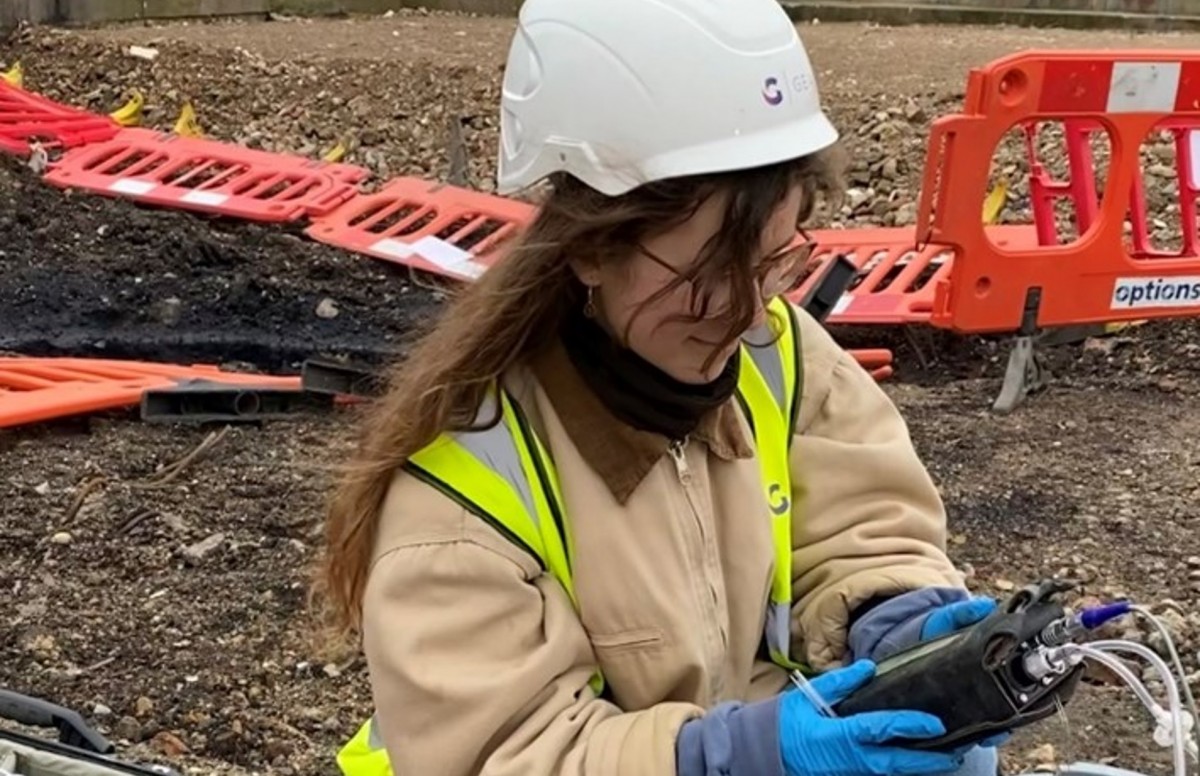The Ultimate Guide To Geotheta
The Ultimate Guide To Geotheta
Blog Article
8 Simple Techniques For Geotheta
Table of ContentsThe Greatest Guide To GeothetaThe Geotheta DiariesGeotheta Things To Know Before You BuyGeotheta Things To Know Before You Buy
They team up with civil engineers, structural engineers, architects, and other specialists to integrate geotechnical factors to consider right into the overall project layout and building and construction process. This requires reliable team effort, control, and communication to ensure that the geotechnical facets line up with the job goals and satisfy regulative demands.Mining & Materials Design: Principles of exploration, penetration prices, and factors affecting the selection of drilling technique. Blasting techniques in surface and below ground operations. Mechanical and continuous strategies to fragmentation, including longwall shearing and fullface boring.
Modelling of piece and particle dimension circulations; comminution as a transfer feature. Comminution modern technology: crushing, grinding, size category. Integrated evaluation of fragmentation and comminution procedures. Provided by: Mining & Products Engineering.
The Best Guide To Geotheta
Bachelor's degree programs in civil, geotechnical, geological, and environmental engineering commonly last four years and consist of basic education and learning courses in English, social science, and the humanities, as well as courses in advanced mathematics, structural geology, and fluid mineralogy. (https://www.ted.com/profiles/47432098)
Geotechnical design involves the evaluation of the dirt and rock problems at a particular site, and their ramifications for the growth of that site. As a lot of frameworks count on the ground for assistance, it lacks shock that a comprehensive understanding of the ground problems, and the viability of foundation systems, are essential to the long-term stability and performance of the structure or structure.
Specialising in the examination of geological formations and ground behaviour, geotechnical engineers carry out scientific examinations and screening to understand the effect these geological formations might carry the style and construction of structure, civil and facilities projects. This competence is critical for the style and construction of buildings, roads, tunnels, dams, bridges, and supply of water and sewer system.
The geotechnical group at Douglas Partners consistently seek advice from designers, layout engineers, designers, and builders to make suggestions on design and advancement proposals to make sure that the constructed structures are suitably created for the ground problems. The layout of footing systems requires to take into consideration the weight of the framework, the capability of the ground to support that weight together with movement tolerances and effective building.
About Geotheta
This job is significantly streamlined by the use our Douglas Map geospatial platform which makes this info readily easily accessible in an easy to use web internet browser user interface. A geotechnical engineer will guide the boring of boreholes and examination pits to collect soil and other examples, and additionally analyze surface functions and ground direct exposures to create a geotechnical model of the subsurface conditions.
Depending upon the task type and ground conditions experienced, research laboratory screening might to name a few points assess strength, compressibility, reactivity and/or leaks in the structure of soil and rock examples. After this information is accumulated and looked at, the outcomes are made use of for a geotechnical model of the site, which is typically presented as sections across the site.

A geotechnical investigation by nature can just analyze the ground problems at the places drilled or excavated. All-natural variants in dirt and rock problems can happen throughout a website and in between test locations. It is therefore good practice that the geotechnical engineer be retained throughout building and construction of the project to offer on-site verification that the ground conditions come across are regular with the assumptions and suggestions offered in the geotechnical examination record.
About Geotheta
Geotechnical engineers utilize their in-depth expertise of dirt and rock to evaluate risk and solve troubles on diverse framework projectsGeotechnical design is a specialist branch of civil engineering which visit here considers the behaviour of planet materials and the application of soil and rock technicians. Geo Tech Engineering. As a geotechnical designer, you will analyze the physical, mechanical and chemical residential properties of soil and rock in order to develop structures, keeping frameworks and earthworks
Geotechnical engineering is closely connected to and overlaps with, both engineering geology and ground design - https://geotheta.bandcamp.com/album/geotheta. It's possible to specialise in geotechnics or help a geotechnical business yet be referred to as a design geologist or a ground designer. As a geotechnical engineer, you'll need to: build and preserve connections with customers and other experts involved in the website, throughout each projectmaintain safety criteria on site be conscious of cost effects when you make recommendationsstudy geological maps and aerial photographs from a range of resources and from different time periodsexamine construction plans to see exactly how feasible they are based upon your understanding of the siteinvestigate risks or geological dangers for the sitesearch for environmentally delicate attributes, such as garbage dump start to establish factual and expository ground modelsplan area investigationsdrill and evaluate samples of bedrock, dirt, groundwater and additional products supervise various other professionals on sitesolve technical issues as they develop, such as unforeseen structures at drill sitesmonitor problems during and after construction to ensure frameworks are steady in the brief and lengthy termadding information gathered on website to your initial researchcreating geotechnical calculations, drawings, and 2 or three-dimensional computer designs analyzing the datamaking suggestions regarding the suggested use the website

Report this page